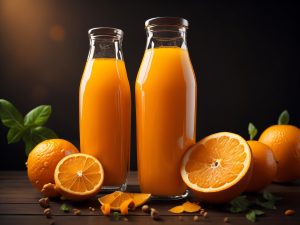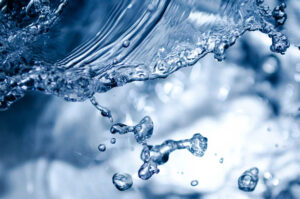 For the past year or so, I have been consuming a shake each day. I use soymilk, frozen bananas, and five tablespoons of various ground nuts and seeds. Recently, I started adding pea protein powder to them. These shakes must be around 850 calories or more, but they never really fill me up. It definitely decreases my hunger but never makes me as full as I would expect from consuming that many calories, especially compared to consuming them unblended
For the past year or so, I have been consuming a shake each day. I use soymilk, frozen bananas, and five tablespoons of various ground nuts and seeds. Recently, I started adding pea protein powder to them. These shakes must be around 850 calories or more, but they never really fill me up. It definitely decreases my hunger but never makes me as full as I would expect from consuming that many calories, especially compared to consuming them unblended
Do calorie-containing beverages like milk, juices, sodas, alcohol, and the like satisfy our hunger? From personal experience, I think not. Back in my younger years, a night of drinking beer increased, not decreased, my appetite. I believe the lack of volume is to blame and that our stomach does not register the calories as it normally would if they were solid because stretch receptors in the stomach are not activated. This is just what I think, but what I think doesn’t really matter. Let’s see what science has to say on this matter.
Caloric beverage with lunch and later food intake
Satiety- a condition or feeling of being full
A study spanning six weeks served subjects lunch with either 360 grams of water, diet cola, regular cola, orange juice, or 1% milk and measured overall caloric intake (1). Subjects consuming caloric beverages had a higher energy intake compared to subjects consuming non-caloric beverages (1). The subjects consuming the caloric beverages did not adjust their meal intake to account for the drinks and consumed an average of 104 more calories with lunch than the subjects drinking non-caloric beverages (1). Those consuming caloric beverages rated their hunger after the meal similarly to the subjects consuming non-caloric beverages (1).
Another study compared the intake of lunch after drinking small water, large water, small diet cola, large diet cola, small cola, or large cola and found that subjects in each group all ate the same amount of food at lunch (2). This means that the subjects who drank a caloric beverage consumed more overall calories than the other groups that consumed non-caloric beverages (2). This also shows that intake of water during lunch did not decrease energy intake, as the groups that consumed large amounts of water ate the same amount as the groups with small water intake (2). Ratings of hunger and fullness after consuming beverages were the same across all groups (2).
Over the course of 10 weeks, overweight men and women were given either sucrose or artificially sweetened supplements each day (3). After the study was over, the overweight subjects who consumed a considerable amount of sucrose each day had increased energy intake, body weight, and fat mass compared to the subjects consuming artificial sweeteners (3). Even though they were consuming extra calories each day from sucrose, their bodies did not adjust to the increased intake, and they ate the same amount of food as usual.
Effect of alcohol on food intake
I mentioned earlier about alcohol increasing my appetite, and not very surprisingly, studies support this idea. In one study, subjects ate breakfast, lunch, and dinner in a lab and were served either no alcohol lager, lager spiked with 1 unit ethyl alcohol, or 4 units of alcohol (4). The alcoholic beverages were significantly higher in calories than the non-alcoholic beverages (4). Those receiving the 4 units of alcohol had the greatest intake at lunch (1670 calories) compared to the 1 unit (1296 calories) and no alcohol group (1333 calories) (4).
Energy intake at dinner was similar for all subjects (4). There were no differences in overall energy intake between the 1 unit and the no-alcohol groups (4). Although consuming more calories, the 4 units group had more hunger at the end of the day than the other two groups (4). By the end of the day, the 4-unit group consumed about 11% more calories than the other groups (4). This study showed that alcohol has a dose-dependent effect on hunger, and 1 unit of alcohol is not enough to stimulate hunger, while 4 units of alcohol are.
A similar study compared energy intake among those who consumed a non-alcoholic lager to that of a lager containing 3 units of alcohol (5). Those in the alcohol groups consumed significantly more calories than the non alcohol group (1744 calories vs. 1548 calories) during lunch, amounting to a 30% increase in caloric intake when taking the calories of the drinks into consideration (5).
Satiety of solid versus liquid
One study had subjects consume 450 carbohydrate calories as either jellybeans or soda and measured their subsequent energy intake (6). The group eating the solid jellybeans actually adjusted their overall energy intake to balance out the additional digested calories so that their caloric intake was similar to baseline (6). The group consuming the soda did not adjust their energy intake and thus consumed an additional 450 calories a day (calories from the soda) (6).
Another study compared the effect of various physical forms of fruits on subsequent energy consumption using apples, applesauce, and apple juice (7). They found that the subjects consumed significantly less energy from the meal after eating apple pieces compared to the pureed apple and apple juice (both with and without fiber) (7). Subjects also ate less energy after eating the apple sauce compared to both types of apple juice (7).
Consumption of all types of apples led to a decreased intake at lunch compared to the control group that did not consume any food or drink before lunch (7). After eating the various types of apples, subjects who ate the apple pieces expressed the greatest reduction in hunger, and those who ate the apple sauce were more full compared to those who drank the juice (7). This study showed that even when consuming the same amount of calories as an apple or juice, our brain does not register juice as filling, showing that our body may process and register liquids differently than solid foods.
Physiology behind beverages lack of satiety
The act of chewing food may provide an internal satiety signal not activated when liquids are swallowed (6). Early pancreatic endocrine and exocrine responses to the oral chewing of food are greater than those seen for liquids (6). Another reason may be that we expect to get less full from liquid food, which can influence how full we feel after eating. It can also be because liquids have a lot less volume than solid foods and may not trigger receptors in the stomach, which are influenced by the volume of food. Also, from an evolutionary standpoint, our ancestors most likely did not drink fruit juices or milk, definitely did not have a blender to puree food, and ate solid foods, so our stomachs may not have evolved to register liquid food.
Discussion
It seems obvious that our body treats a solid food differently than the liquid version of the solid food. We do not decrease our food intake, even when we drink beverages that contain significant amounts of calories. This does not only include soda but also fruit juices, alcohol, and milk. To maintain a healthy weight, it would be wise to cut out caloric soda completely from the diet and to consciously compensate for calories when drinking fruit juices or milk since they do not fill us up and eating the same amount of food as normal would cause weight gain over time.
Many people like to blame only sugar-ridden soda for the obesity problem in this country. I would say that milk and fruit juices also play a major role. People think that just because a drink is sweetened with sugar from fruit, it is healthy. The sugar in fruit is no different from table sugar, both of which contain exclusively empty calories (calories with little to no nutrients).
Milk contains some vitamins and minerals, but also calories, depending on the type of fat. If you have a problem controlling your food intake and feeling full, I would avoid milk and get your calcium and vitamin D from vitamin supplements. While juice and milk can be part of a healthy diet, they are not essential, and for certain people, complete avoidance may be necessary.
It has become common but incorrect knowledge in this society that drinking water can fill you up and keep you from hunger. Even if our brain could recognize caloric beverages as food, this would not apply to water, as it has no calories. You may get bloated and pee a lot, but I doubt that you would get full. Studies do not seem to support the idea that drinking water can help fill you up.
Sources
- DellaValle, D. M., Roe, L. S., & Rolls, B. J. (2005). Does the consumption of caloric and non-caloric beverages with a meal affect energy intake?. Appetite, 44(2), 187-193.
- Flood, J. E., Roe, L. S., & Rolls, B. J. (2006). The effect of increased beverage portion size on energy intake at a meal. Journal of the American Dietetic Association, 106(12), 1984-1990.
- Raben, A., Vasilaras, T. H., Møller, A. C., & Astrup, A. (2002). Sucrose compared with artificial sweeteners: different effects on ad libitum food intake and body weight after 10 wk of supplementation in overweight subjects. The American journal of clinical nutrition, 76(4), 721-729.
- Caton, S. J., Ball, M., Ahern, A., & Hetherington, M. M. (2004). Dose-dependent effects of alcohol on appetite and food intake. Physiology & behavior, 81(1), 51-58.
- Hetherington, M. M., Cameron, F., Wallis, D. J., & Pirie, L. M. (2001). Stimulation of appetite by alcohol. Physiology & behavior, 74(3), 283-289.
- DiMeglio, D. P., & Mattes, R. D. (2000). Liquid versus solid carbohydrate: effects on food intake and body weight. International journal of obesity, 24(6), 794-800.
- Flood-Obbagy, J. E., & Rolls, B. J. (2009). The effect of fruit in different forms on energy intake and satiety at a meal. Appetite, 52(2), 416-422.
Lorem ipsum dolor sit amet, consectetur adipiscing elit. Ut elit tellus, luctus nec ullamcorper mattis, pulvinar dapibus leo.



